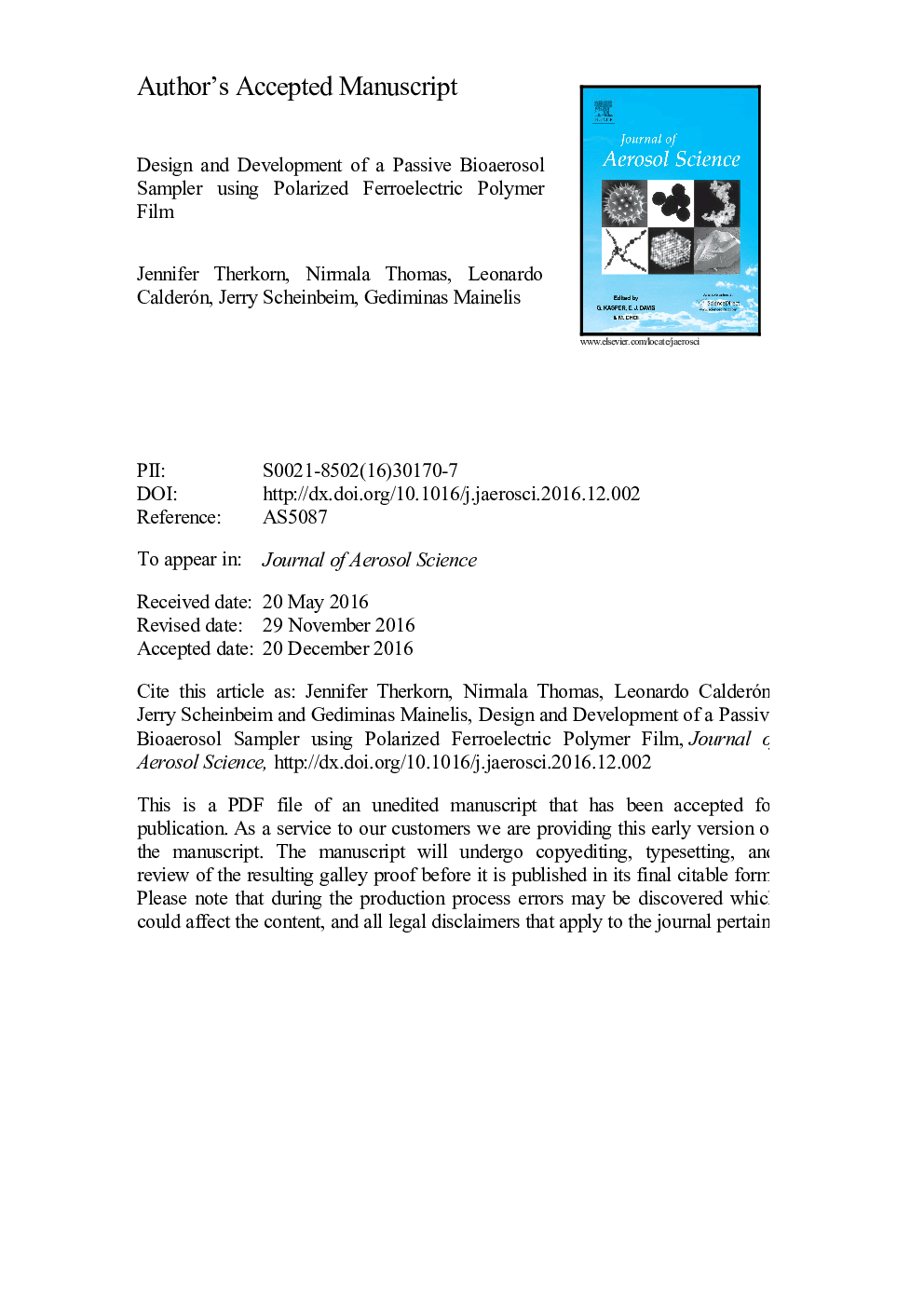| Article ID | Journal | Published Year | Pages | File Type |
|---|---|---|---|---|
| 5753963 | Journal of Aerosol Science | 2017 | 52 Pages |
Abstract
Passive samplers are needed to collect bioaerosols over broad spatiotemporal scales. Here, we present the design and development process of a novel, passive bioaerosol sampler using polarized, ferroelectric polymer film (poly(vinylidene fluoride), PVDF). First, the elution efficiencies of spiked bacteria and fungal spores from PVDF, prototype film holder materials (3D-printed plastics), and controls (PTFE filters and electrostatic dust cloths) were investigated. Second, a wind tunnel was used to determine optimal air channel widths between parallel sheets of PVDF for efficient collection of charge neutralized and non-charge neutralized test particles in viral, bacterial and fungal size ranges flowing with typical indoor air velocities. Particle collection efficiencies were then compared for PVDF, a PVDF copolymer (77% PVDF, 23% TrFE) and control materials (polyvinylchloride and polyfluoroalkoxy alkane). Third, a calm air settling chamber was used for proof of concept tests. Spiked microorganisms were removed with 100% elution efficiency from the PVDF and 3D-print materials. PVDF gave significantly greater collection efficiency (~30%) when using air channel widths of 2.25Â mm compared to other tested widths (p<0.001). Compared to control materials, PVDF gave 13% to 30% greater collection efficiencies across all tested particle size ranges for charge neutralized and non-charge neutralized particles (p<0.001). In the calm air chamber, a spiral film prototype sampler with poled PVDF provided a greater than six-fold increase in captured bacterial quantity compared to gravimetric settling onto a 25Â mm reference filter (p<0.05). This passive sampler concept offers many benefits compared to other active and passive bioaerosol samplers: small size and portability, increased bioaerosol collection compared to controls, capture of all bioaerosol particle sizes including nano-sized particles, expedited particle elution, and easy sampler production by 3D-printing. The next stage of research will be outdoor field testing to determine the collection efficiency for culturable and non-culturable samples.
Related Topics
Physical Sciences and Engineering
Earth and Planetary Sciences
Atmospheric Science
Authors
Jennifer Therkorn, Nirmala Thomas, Leonardo Calderón, Jerry Scheinbeim, Gediminas Mainelis,
